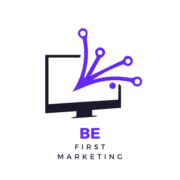Ready to turn your knack for creating visually appealing websites into a profitable venture? You’re in the right place. Knowing how to start a web design business can be an exciting journey, transforming your creative passion into a source of income.
This article will guide you through the essential steps on how to start a web design business. From understanding the market to setting up your portfolio, we’ve got you covered. So, buckle up and prepare to embark on an entrepreneurial journey that could redefine your career path.
How to Start a Web Design Business
Key Trends and Growth Areas

The dynamic nature of the web design industry leads to an ever-evolving landscape of trends. One significant trend is the rise in the use of interactive designs. The need for user-friendly interfaces enhances this trend, promoting immersive experiences for website visitors. Data supports this; 88% of online consumers are less likely to return to a site after a bad experience, according to a survey by SoDA.
Furthermore, growth areas lie in the integration of AI and machine learning into website design. These technological advancements offer opportunities for unprecedented customization and personalization, making websites more efficient and user-specific. A study by Adobe revealed that 38% of people stop engaging with a website if the layout is unattractive.
Understanding Your Competitor Landscape
Knowledge of the competitor landscape equips you with strategic insights. By studying competitors, you learn about their design style, pricing, customer service, and overall online presence. SEMRush’s research confirms that competitor analysis is a critical tool for identifying potential market opportunities and forecasting market developments.
Striking a balance between differentiating your services and learning from successful competitors sets the stage for achieving a competitive edge in the web design industry. To empower such a balance, both monitoring competitor strategies and implementing unique solutions prove vital.
Planning Your Web Design Business
Put to good use the insights gleaned from analyzing the web design industry and its trends. Now, it’s time to make strategic decisions about the business model and structure for the prospective web design business. Remember to integrate unique solutions identified from examining competitors.
Defining Your Business Model

The business model serves as a map guiding the operations of a web design business. It encompasses the proposed value proposition, customer segmentation, and revenue streams. An entrepreneur opts for either the freelance model, which targets individuals and small businesses, or the agency model catering to larger corporations.
A hybrid model provides services to both segments, enhancing an entrepreneur’s versatility. For instance, giants in the industry like Revenue River and IDEO create a hybrid business model.
Setting Up Your Business Structure
Establishing a business structure formalizes a web design business. Options vary from sole proprietorships, partnerships, corporations, to Limited Liability Companies (LLCs). Features differ in terms of tax implications, personal liability, and the complexity of the setup process. For example, Bean Ninjas started as a partnership before transitioning into an LLC. The choice rests entirely on the entrepreneur’s discretion, taking into account their unique situation and long-term business goals.
Essential Skills and Tools for Web Designers
Technical Skills Needed

To kick-start a web design business, mastering certain technical skills proves inevitable. Understanding Hypertext Markup Language (HTML) and Cascading Style Sheets (CSS) tops the list. These are the bedrock of web page design, enabling designers to structure content and apply aesthetics respectively.
Additionally, a command over JavaScript, another core component of web technologies, helps in enhancing web interactivity. Further, designers must be proficient in Bootstrap or AngularJS to ensure responsive design that works seamlessly across platforms and devices.
Beyond Having the Right Skills
Starting a web design business isn’t just about having the right skills. It’s about understanding the industry, knowing your competitors, and setting up effective marketing strategies. Networking plays a crucial role, as does the acquisition of clients and maintaining a business blog. Once you’re in business, managing projects and client relationships becomes paramount. Onboarding new clients, handling project deliverables, and dealing with feedback are all essential aspects.

